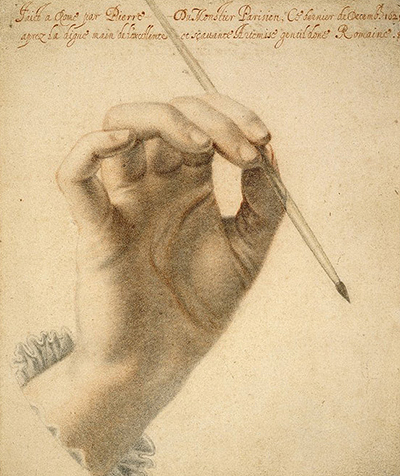Artemisia Gentileschi drawings are sadly in short supply. Very few have survived to the present day, whilst many others remain unidentified, such was her close relationship with a number of artist workshops across her career.
Renaissance and Baroque artists tended to view drawing as a means of preparation for a later sculpture or painting, rather than a truly valuable medium in its own right. As such, artists would not tend to look after their study sketches with much care and would also pass them around their studios in order to allow others to learn from their techniques or to follow an artwork in a consistent manner. This was a part of creating a brand from an artist's name, even though other assistants would also work on many of their artworks. Consistency would prove crucial in building a reputation. The period in which we are focusing was around five hundred years ago and so it is not perhaps surprising that so few artworks created on paper have survived this long.
The drawing that we have included in this section is not from the artist's hand, but actually of her hand. It is a black and red chalk on paper by Pierre Dumonstier II from 1625. Whilst we cannot source any of her own drawings as individual artworks, progress has been made in recent years to understand better her development techniques. This has been achieved through X-Rays of her paintings which have revealed the earlier stages of each work. As with most artists from this era, she would initially start with a broad sketch to layout the composition before adding additional layers of oil or egg tempera. We can only now see this through this scientific approach which is being used more and more due to the unclear attribution that exists on a number of artworks right across the world.
As a renowned portrait artist, we can be confident that she would have honed her skills as a draughtswoman, just as with all other Renaissance and Baroque portrait painters would have done. Even the finest artists required endless practice in order to get each part of the face and anatomy just right. Gentileschi would then use her excellent understanding of colour to layer up her figures and also add emotional expressions. Her lighting was also dramatic, another element which could not really be covered in the early stages of study drawings. All of her early development was due to the help of her father who encouraged her to interact within his own artistic studio and would invite artists to tutor his daughter about specific technical elements. This likely would have included drawing at the earliest stages, before moving on to the more complex elements of composing a painting.
We looked into drawings from her father, Orazio Gentileschi, but could not find any examples from his career either. She showed many similarities in her paintings in the earliest stages of her career, so these could have given us a suggestion as to how her drawing style might have looked, but to no avail. There have been some significant exhibitions about her life and career in recent years and if any drawings do exist they will likely appear in one of those, or in the accompanying documentation. Alternatively, native Italian speakers might have better luck as it is possible that some elements of her career have simply not been translated into English as yet.




